Copyright 2009 by Corwin Press
First Skyhorse Publishing edition, 2016
All rights reserved. No part of this book may be reproduced in any manner without the express written consent of the publisher, except in the case of brief excerpts in critical reviews or articles. All inquiries should be addressed to Skyhorse Publishing, 307 West 36th Street, 11th Floor, New York, NY 10018.
Skyhorse Publishing books may be purchased in bulk at special discounts for sales promotion, corporate gifts, fund-raising, or educational purposes. Special editions can also be created to specifications. For details, contact the Special Sales Department, Skyhorse Publishing, 307 West 36th Street, 11th Floor, New York, NY 10018 or .
Skyhorse and Skyhorse Publishing are registered trademarks of Skyhorse Publishing, Inc., a Delaware corporation.
Visit our website at www.skyhorsepublishing.com.
10 9 8 7 6 5 4 3 2 1
Library of Congress Cataloging-in-Publication Data is available on file.
Acquisitions Editor: Jessica Allan
Editorial Assistant: Joanna Coelho
Production Editor: Libby Larson
Copy Editor: Teresa Herlinger
Typesetter: C&M Digitals (P) Ltd.
Proofreader: Theresa Kay
Indexer: Will Ragsdale
Cover Designer: Michael Dubowe
Graphic Designer: Michael Dubowe
Print ISBN: 978-1-5107-0430-5
Ebook ISBN: 978-1-5107-0431-2
Printed in the United States of America
 Contents
Contents
 Foreword
Foreword
A ssume we contacted all knowledgeable, experienced, reasonable, concerned, and relevant persons from all geographic areas, and ethnic, racial, and socioeconomic levels. Then we asked them to delineate the skills, techniques, attitudes, values, and other important elements that should be in the repertoire of a good teacher of students with severe disabilities. Certainly, some of that which was delineated would be on lists associated with all teachers. Just as certainly, some of this information would be unique to those who teach the students of primary concern here.
After examining the list, most would realize that it is impossible for any one person to actualize all of the elements in an instructional program for even one student. But with this fund of knowledge available and with its appropriate implementation, the results would be a substantial enhancement of the basic life quality of students with disabilities. This book contains a compilation of important basic information related to the repertoire needed by those involved in the education of these students.
Who should be aware of this information? Who should help bring to life the imbedded goals, concepts, and strategies? Who can benefit from the contents?
Both new and experienced teachers who interact with students with significant disabilities should be aware of the contents. Why? Because they can use it as a guideline to help verify that they are implementing a credible array of important policies, values, and instructional practices.
Parents of children with significant disabilities should absorb the contents. Why? Because the book is written in a style that easily communicates basic information to individuals without a degree or any training in special education. Because parents who have this knowledge will be better advocates for their children within their schools and communities. Because they will have a standard by which to measure the services being provided for their child.
Higher education teacher training personnel should be familiar with this book. Why? Because it will provide them with an excellent resource for their neophyte teachers.
Finally, those who are involved in the various types of alternative teacher training programs should be aware of this book. Why? Because it will remind them that the teachers with whom they are involved must be held to the same high standards as teachers in a traditional teacher certification program.
This book, then, offers a readable and practical introduction to the basics of teaching children with significant disabilitiesour most challenging and deserving students.
Lou Brown
Professor Emeritus
University of Wisconsin
 Preface
Preface
D ear special education teacher,
Welcome to Common-Sense Classroom Management Techniques for Working With Students With Significant Disabilities. The focus of our book is to provide support, resources, and teaching strategies for educating students with unique learning characteristics. You will find practical ideas, Web-based resources, and easy-to-use documents to assist you in developing high-quality educational practices that will help your students achieve their full potential. The book is structured so that each chapter provides topic-centered information with implementation strategies that include specific examples. Most chapters include figures such as charts, graphs, resources, or sample forms that can be used as is or modified.
It is our belief that students with complex intellectual disabilities learn best when instruction follows a routine pattern and is provided in naturally occurring, age-appropriate settings. All students have a place in general education; special education is designed and intended to support the student in environments that are appropriate for the concept or skill being taught. Throughout this book, you will find examples of how to establish learning opportunities that are inclusive of students with and without disabilities.
Special education teachers have many responsibilities, and the laws driving our paperwork seem to change frequently. The aim of this book is to help you focus on the unique strengths and needs of the students you serve. Youll find practical ideas for organizing your work, tracking student progress, and coordinating the team of professionals working with each student. Any of the ideas you find here can be changed and modified to meet the unique needs of your school or community setting. We hope you find the strategies helpful to you and your students.
Best wishes for success this school year.
Jill Lindberg
Michele Ziegler
Lisa Barczyk
 About the Authors
About the Authors

Jill A. Lindberg has a degree in Exceptional Education from the University of WisconsinMilwaukee. She retired from Milwaukee Public Schools in June 2003 and is currently a supervising teacher for the University of WisconsinMilwaukee. Her teaching experience includes 6 years as a mentor teacher assisting both general and special education teachers in Milwaukee Public Schools. She has also taught students with specific learning disabilities, students with emotional/behavioral disabilities, and students with hearing impairment.
This book is the fifth in the Common Sense series that she has coauthored with educators from the Milwaukee area.

Michele Flasch Ziegler has a PhD in Special Education from the University of WisconsinMadison as well as a Masters Degree in Education Administration from Indiana University. She has 19 years of experience in teaching, administration, and teacher training. Her teaching experiences include working as a high school classroom teacher for students with intellectual disabilities and as a transition teacher for the Madison, Wisconsin, Metropolitan School District. She also assisted in coordinating services and offering technical support to teachers working in the K12 intellectual disabilities program in the Indianapolis Public Schools. Currently, she is an assistant professor at Cardinal Stritch University in Milwaukee, Wisconsin. In an effort to continually expand opportunities and the quality of life for individuals with intellectual disabilities, she continues to support schools and families that include individuals with diverse needs.

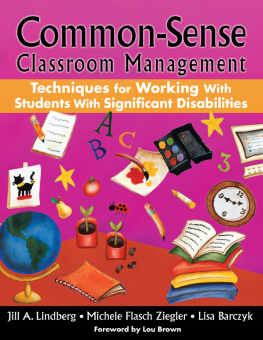
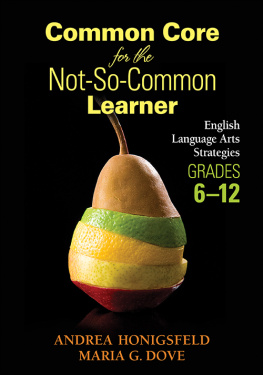
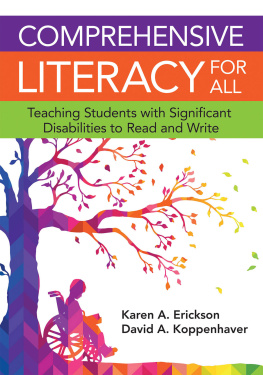
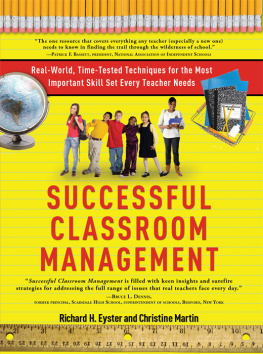


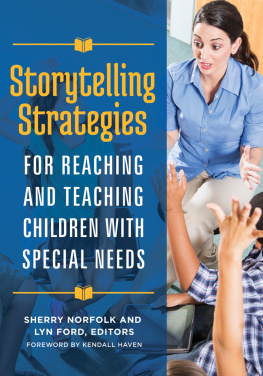

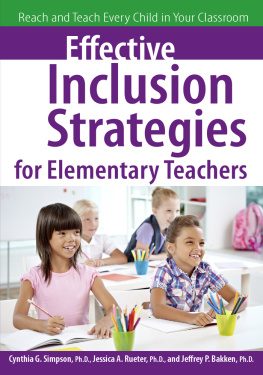


 Contents
Contents
